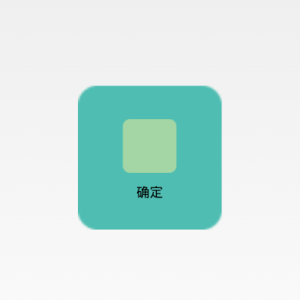編輯:關於Android編程
本文實例講述了Android編程實現簡單的UDP Client。分享給大家供大家參考,具體如下:
該代碼在4.2.2內調試通過
1.記得加權限
<uses-permission android:name="android.permission.INTERNET"/>
注意:Android 4.0之後,就不能在主線程進行socket通信,否則會拋異常。
2.代碼
MainActivity.java:
package mao.example.quicksend;
import android.app.Activity;
import android.content.Context;
import android.os.Bundle;
import android.os.Handler;
import android.util.Log;
import android.view.Menu;
import android.view.MenuItem;
import android.widget.Button;
import android.widget.TextView;
import android.widget.Toast;
import android.view.View;
public class MainActivity extends Activity {
@Override
protected void onCreate(Bundle savedInstanceState) {
super.onCreate(savedInstanceState);
setContentView(R.layout.activity_main);
InitUI();
//獲得Button對象
Button btnConnect = (Button) findViewById(R.id.buttonConnect);
btnConnect.setOnClickListener(new Button.OnClickListener() {
public void onClick(View v)
{
//這裡處理事件
//ConnectServer();
//UDPClient udpET = new UDPClient("192.168.0.14","123");
//udpET.start();
//DisplayToast("點擊了\"連接\"按鈕");
}
});
//發送Button
btnConnect = (Button) findViewById(R.id.buttonSend);
btnConnect.setOnClickListener(new Button.OnClickListener() {
public void onClick(View v)
{
//這裡處理事件
SendText();
}
});
}
@Override
public boolean onCreateOptionsMenu(Menu menu) {
// Inflate the menu; this adds items to the action bar if it is present.
getMenuInflater().inflate(R.menu.main, menu);
return true;
}
@Override
public boolean onOptionsItemSelected(MenuItem item) {
// Handle action bar item clicks here. The action bar will
// automatically handle clicks on the Home/Up button, so long
// as you specify a parent activity in AndroidManifest.xml.
int id = item.getItemId();
if (id == R.id.action_settings) {
return true;
}
return super.onOptionsItemSelected(item);
}
/* 顯示Toast */
public void DisplayToast(String str)
{
Toast.makeText(this, str, Toast.LENGTH_SHORT).show();
}
public void InitUI()
{
TextView text=(TextView)findViewById(R.id.editTextIP);
text.setText("192.168.0.14");
text = (TextView)findViewById(R.id.editTextFilePath);
text.setText("Udp Client Send Test");
}
// connect server
public void SendText()
{
TextView editIP=(TextView)findViewById(R.id.editTextIP);
TextView editText=(TextView)findViewById(R.id.editTextFilePath);
String message = editText.getText().toString() + "\r\n";
UDPClient udpET = new UDPClient(editIP.getText().toString(), message);
udpET.start();
}
}
UDPClient.java:
package mao.example.quicksend;
import java.io.IOException;
import java.net.DatagramPacket;
import java.net.DatagramSocket;
import java.net.InetAddress;
import java.net.SocketException;
import java.lang.String;
public class UDPClient extends Thread{
public String m_serverIP;
public String m_text;
public UDPClient(String strServerIP, String strText)
{
m_serverIP = strServerIP;
m_text = strText;
}
@Override
public void run() {
// TODO Auto-generated method stub
int TIMEOUT = 3000;
int servPort = 8800;
byte[] bytesToSend = m_text.getBytes();//"test_client".getBytes();
try {
InetAddress serverAddress = InetAddress.getByName(m_serverIP);
DatagramSocket socket = new DatagramSocket();
socket.setSoTimeout(TIMEOUT);
DatagramPacket sendPacket = new DatagramPacket(bytesToSend,bytesToSend.length,serverAddress,servPort);
socket.send(sendPacket);
socket.close();
} catch (SocketException e){
e.printStackTrace();
}catch(IOException e){
e.printStackTrace();
}
}
}
3. activity_main.xml:
<LinearLayout xmlns:android="http://schemas.android.com/apk/res/android"
xmlns:tools="http://schemas.android.com/tools"
android:id="@+id/LinearLayout1"
android:layout_width="match_parent"
android:layout_height="match_parent"
android:orientation="vertical"
android:paddingBottom="@dimen/activity_vertical_margin"
android:paddingLeft="@dimen/activity_horizontal_margin"
android:paddingRight="@dimen/activity_horizontal_margin"
android:paddingTop="@dimen/activity_vertical_margin"
tools:context="mao.example.quicksend.MainActivity" >
<EditText
android:id="@+id/editTextIP"
android:layout_width="match_parent"
android:layout_height="wrap_content"
android:hint="@string/text_IP" />
<Button
android:id="@+id/buttonConnect"
android:layout_width="match_parent"
android:layout_height="wrap_content"
android:text="@string/text_connect" />
<EditText
android:id="@+id/editTextFilePath"
android:layout_width="match_parent"
android:layout_height="wrap_content"
android:hint="@string/text_filePath" >
<requestFocus />
</EditText>
<Button
android:id="@+id/buttonFileSel"
android:layout_width="match_parent"
android:layout_height="wrap_content"
android:text="@string/text_sel" />
<Button
android:id="@+id/buttonSend"
android:layout_width="match_parent"
android:layout_height="wrap_content"
android:text="@string/text_send" />
</LinearLayout>
更多關於Android相關內容感興趣的讀者可查看本站專題:《Android通信方式總結》、《Android調試技巧與常見問題解決方法匯總》、《Android開發入門與進階教程》、《Android多媒體操作技巧匯總(音頻,視頻,錄音等)》、《Android基本組件用法總結》、《Android視圖View技巧總結》、《Android布局layout技巧總結》及《Android控件用法總結》
希望本文所述對大家Android程序設計有所幫助。
 Android課堂筆記——RadioButton(單選按鈕)&Checkbox(復選框)
Android課堂筆記——RadioButton(單選按鈕)&Checkbox(復選框)
RadioButton和CheckBox的區別: 1、單個RadioButton在選中後,通過點擊無法變為未選中 單個CheckBox在選中後,通過點擊可以變為未選中 2
 Android圖像處理之霓虹濾鏡效果
Android圖像處理之霓虹濾鏡效果
霓虹是用來描繪圖像的輪廓,勾畫出顏色變化的邊緣,加強其過度效果,使圖像產生輪廓發光的效果。主要步驟為1、根據當前像素與其右方和下方像素的梯度運算;2、然後將結果值作為當前
 學習Android Material Design(RecyclerView代替ListView)
學習Android Material Design(RecyclerView代替ListView)
本文實例實現一下 RecyclerView,代碼比較簡單,適合初學者,如有錯誤,歡迎指出。復習 ListView可以查看這篇文章深入淺出學習Android ListVie
 Android UI編程之自定義控件初步——ImageButton
Android UI編程之自定義控件初步——ImageButton
概述: 我想我們在使用一些App的時候,應該不會出現一些“裸控件”的吧。除非是一些系統中的軟件,那是為了保持風格的一致性,做出的一些權衡。我這裡並